800-487-3808
800-487-3808

Finding the best insole is crucial to maintain foot health and treat some of the most common foot conditions. Insoles can be the perfect option for everything from plantar fasciitis, to heel spurs, high arches, and more. However, it’s not always easy to find the right fit, especially when considering the range of variables like material, arch type, length, and footbed. Check out our selection of insoles below, and learn what features are available in each style. We will help you find the insole specifically tailored to your sole.
See what makes each of our rollators and walkers unique here, and decide which factors are most important based on your needs.
Sizing options vary based on the insole type you select. Each pair of insoles include a detailed sizing chart and measurements to help you find the right fit. Most insoles (excluding our carbon fiber insoles) are also trimmable, allowing for an even more precise fit.
You’ll notice that our selection of insoles are typically available in both full-length and ¾ length. Depending on preference, customers usually prefer one style or the other. Here are the differences:
Full-length insoles offer support to the forefoot, as well as the arch and heel. This makes them good for those who are dong plenty of walking or running, or suffer from chronic sores on the front of their foot. Just replace your shoe’s factory insoles and enjoy all their benefits.
This option is ideal if you wear slim or short shoes, or plan on transferring between different pairs on a regular basis. Their compact size makes them easier to handle, and fit in smaller shoes. Put them right on top of your existing insoles for a perfect fit.
Insoles are made from various materials, each designed to serve different purposes. Choosing the right material ensures that your next pair meets your specific comfort and support needs.
Most of our insoles are crafted from high-quality EVA or PU foam, both of which offer excellent benefits for cushioning and support. Depending on your specific needs, you may find one material better suited than the other.
EVA foam is a lightweight, flexible, and firm material, making it an excellent choice for insoles. Its supportive structure is especially popular for athletic shoes and provides relief for individuals with foot conditions like plantar fasciitis. The balance of flexibility and firmness in EVA foam helps absorb impact while maintaining arch support, enhancing comfort during physical activity and daily wear.
PU foam is known for its softness, durability, and excellent shock absorption. Compared to EVA foam, PU foam offers greater cushioning, which adds a bit more weight but significantly enhances comfort. Its high resilience means it resists compression and maintains its shape over time, making it ideal for long-lasting support. If comfort is your top priority, PU foam insoles are an excellent choice for all-day wear and consistent cushioning. Consider our Memory Foam Insoles and Heavy Duty Gel Insoles.
Gel is an excellent material for insoles due to its superior cushioning and shock absorption, making it ideal for relieving pressure points in the heel and ball of the foot. Gel insoles conform closely to the foot's shape, helping to reduce discomfort and fatigue, especially for those on their feet all day. While slightly heavier than EVA or PU foam insoles, gel provides targeted comfort where it’s needed most. However, gel insoles typically offer less structural support, as their primary function is to alleviate pressure rather than provide firm arch support.
Our carbon fiber insoles are crafted from 3K twill carbon fiber, delivering a strong and lightweight footbed. The unique "twill" weave offers the ideal blend of flexibility and resilience, allowing the insoles to move with your foot while providing reliable support. This material’s lightweight structure minimizes bulk, while its inherent rigidity ensures the stability and support needed for active use and high-impact activities.
Check out our Carbon Fiber Insoles here.
Knowing your ach type is an important factor when picking the right insole. To learn whether you have high, low, or neutral arches, you can start with the footprint test: simply wet the bottom of the foot and make an imprint on a piece of cardboard. If the middle section of your foot is completely filled in, you may have low arches. If it is missing completely, you may have high arches. It is common to fall somewhere in the middle.
When in doubt, keep in mind that our insoles are made to fit most types of arches. They’re a great place to start if you’re unsure of what you are looking for.
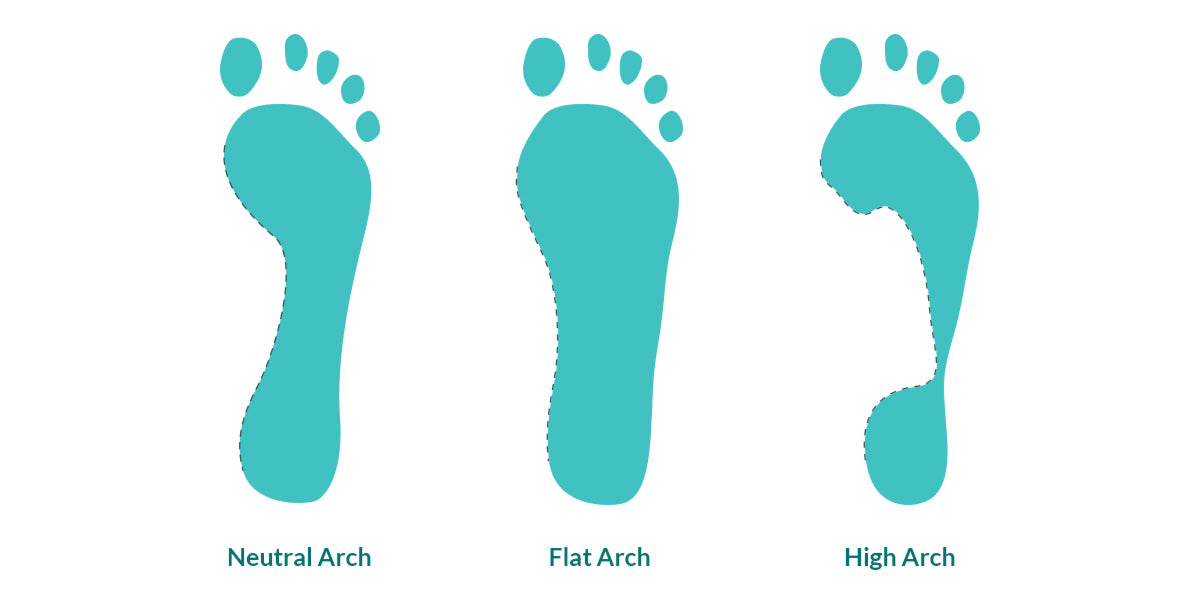
Neutral arches are the most biomechanically efficient, effectively absorbing shock and resisting over-pronation. Around 60% of people have neutral arches. Keep in mind that those with neutral arches can still suffer from common foot conditions like heel pain and metatarsalgia. If you have neutral arches, look for an insole that can provide a balance of arch support and cushioning for the heel and ball of the foot.
Those with low or fallen arches will have feet that hug the floor, with little to no arch definition in the midsole. Low arches are more flexible, making them susceptible to rolling, overpronation, and plantar fasciitis. If you have fallen arches, make sure to find an orthotic with plenty of medial rearfoot support--our EVA foam insoles are a good bet.
High arches are characterized as being very rigid, with a pronounced arch that rises high off the ground. This leads to excessive pressure being placed on the heel and ball of the foot, causing pain. The perfect orthotics will fill in your arch cavity, taking the pressure off of other parts of the foot. Give our full length Plantar Plus insoles a try, for reinforced arch support.
Our insoles come in a variety of different footbed options, offering different levels of cushion and rigidity. Learn the pros and cons of each below.
A rigid footbed offers firm, stable support with minimal flexibility, designed to maintain proper foot alignment and reduce strain. Its solid structure helps limit unnecessary foot movement, enhancing control and stability, especially during high-impact activities. Our Carbon Fiber Insoles are an ideal choice for those seeking a rigid footbed that maintains its supportive qualities, delivering lasting stability and control for optimal performance.
A semi-rigid footbed blends the structural support of a rigid insole with the flexibility of a softer one, creating a comfortable and adaptive foundation. With a slight give, semi-rigid footbeds naturally follow foot movement, maintaining alignment and arch support while enhancing comfort and reducing fatigue. This type of insole provides moderate support with just the right amount of cushioning, making it an excellent choice for daily wear and athletic activities where both stability and comfort are essential..
Cushioned footbeds provide mild support, with the primary benefits being exceptional comfort and shock absorption. Made from soft materials like gel or memory foam, these insoles are designed to cradle the foot, reducing stress on the feet, joints, and lower back. Ideal for those seeking relief from foot fatigue or general discomfort, cushioned footbeds offer a soothing foundation that helps alleviate pressure and impact. They’re especially beneficial for individuals who spend long hours on their feet
With so many different insoles to choose from, our customers often have questions about the best insole for their foot condition. If you’re suffering from a specific condition, or need an insole for a particular kind of shoe, try consulting the list below.

Plantar fasciitis is a condition that needs specialized care to overcome its sharp pain and swelling. That’s why we chose the full-length plantar plus design, as it offers reinforced arch support and a deep heel cup to make sure you get the relief you need while stabilizing your foot. It has a versatile design that can work with all types of shoes, while staying durable after extended wear.
See Recommended Insoles for Plantar Fasciitis
View these insoles
Ignoring flat feet can have lasting consequences on your gait, posture, and personal comfort. Luckily, our full-length plantar plus insoles are perfectly suited to support your arches with soft material that can absorb the shock of each footstep. They prioritize heel support to ensure comprehensive foot comfort, making long walks more comfortable.
See Recommended Insoles for Flat Feet
View these insoles
If you’re looking for overall comfort, our Memory Foam Insoles are a good choice. The cushioned memory foam footbeds relieve pressure off the balls and heels of your feet. These insoles fit comfortably into a variety of dress and athletic shoes making them versatile and perfect for all day wear. The arch support is neutral, so if you're looking for more support we’d recommend our Full-Length Plantar Series.
View these insoles
Gait abnormalities, like pronation, can have a major impact on your feet, as well as posture and back health, so be sure to prioritize foot care with our full-length plantar plus insoles. Their shock absorbing gel and a non-slip material will ensure that each step is support exactly where you need it, without shifting inside your shoe over the course of the day.
View these insoles
Keeping your foot aligned is key to avoiding the painful effects of supination. We recommend the Full-Length Plantar Plus insole for lightweight support you can count on. See how their targeted relief and pronounced arch support can make the difference. They fit with all styles of shoe, so you can take advantage of their benefits wherever you go.
View these insoles
The metatarsalgia pain relief is choosing an insole that focuses on support in the ball of the foot, relieving chronic pain. Our Full-Length Gel Insoles are a great choice for cushioned and cooling support that will last throughout the day. See for yourself how they absorb the shock of each step, with a honeycomb design made for your comfort.
View these insoles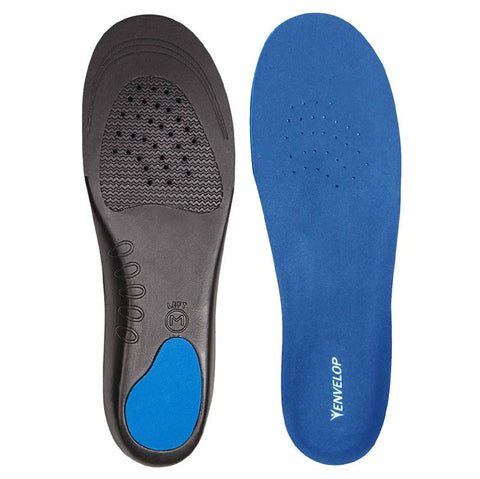
If you suffer from chronic heel pain, looking for an orthotic with a deep heel cup is essential. Try Envelop’s Full-Length Foam Insoles with reinforced plastic and soft padding. They will be sure to keep pain and inflammation at bay while supporting your stride during daily impact activities no matter if you're wearing dress shoes, boots or sneakers. EVA padding will help retain its shape over extended use, and antibacterial material that can be machine washed to keep it fresh for months of use.
View these insoles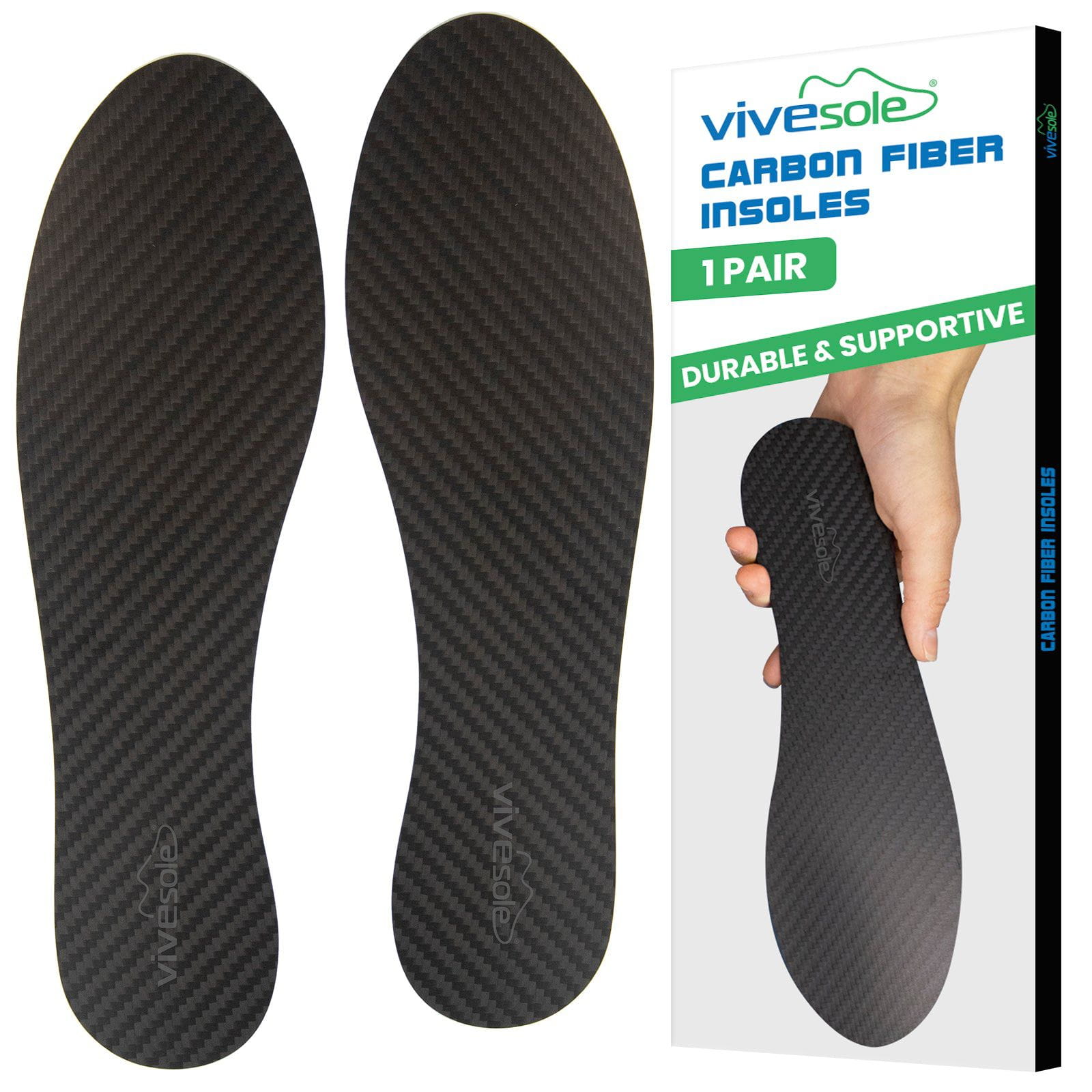
For general foot pain caused by conditions such as Hallux Rigidus, Turf Toe, Arthritis, Morton’s Toe, and foot fractures we recommend our Carbon Fiber Insoles. Constructed with a ridgid yet flexible footbed, these insoles are extremely lightweight (minimizing any bulk), and provide adequate support to the entire foot without restricting natural movement.
View these insoles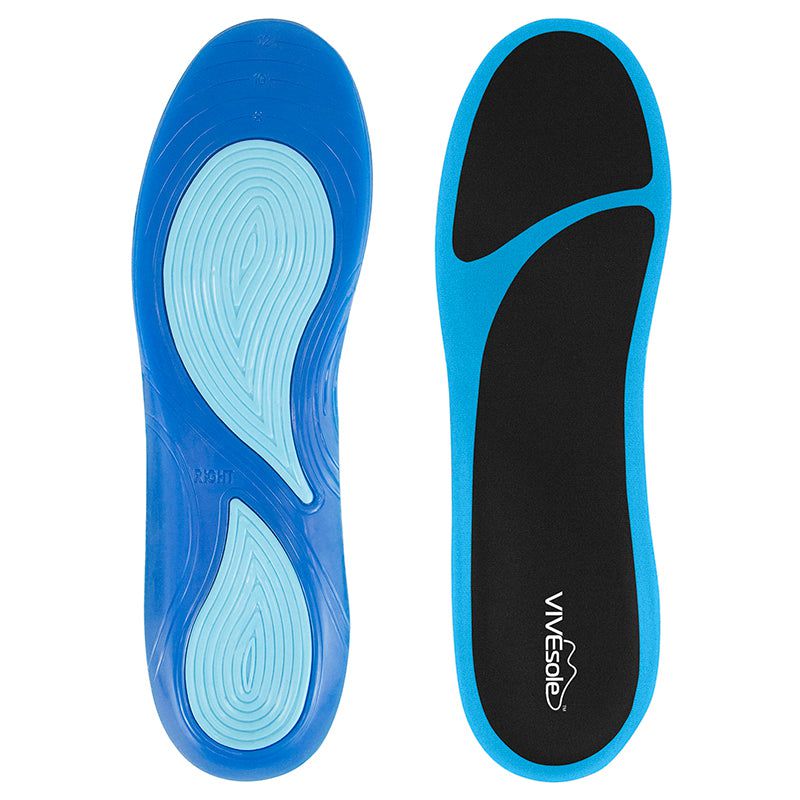
Those with diabetes need to be especially careful about sores, as the lack of blood flow and nerve damage can make them even more dangerous than usual. Vivesole’s Full-Length Gel Insoles are the perfect choice for diabetic feet, with soft gel padding to protect against sores, and relieve the stress on pressure points. They can be easily slipped in and out of shoes, so you won’t have to buy multiple insoles for different footwear.
View these insoles
The best high arch support insoles feature a multi-layer design that contour to the shape of your arch. Check out our Full-Length Plantar Plus insole which keeps your plantar fascia ligament fully supported without flattening over time. It features a breathable material which will ensure your feet stay cool and sweat-free, no matter what kind of shoes you wear them with.
View these insoles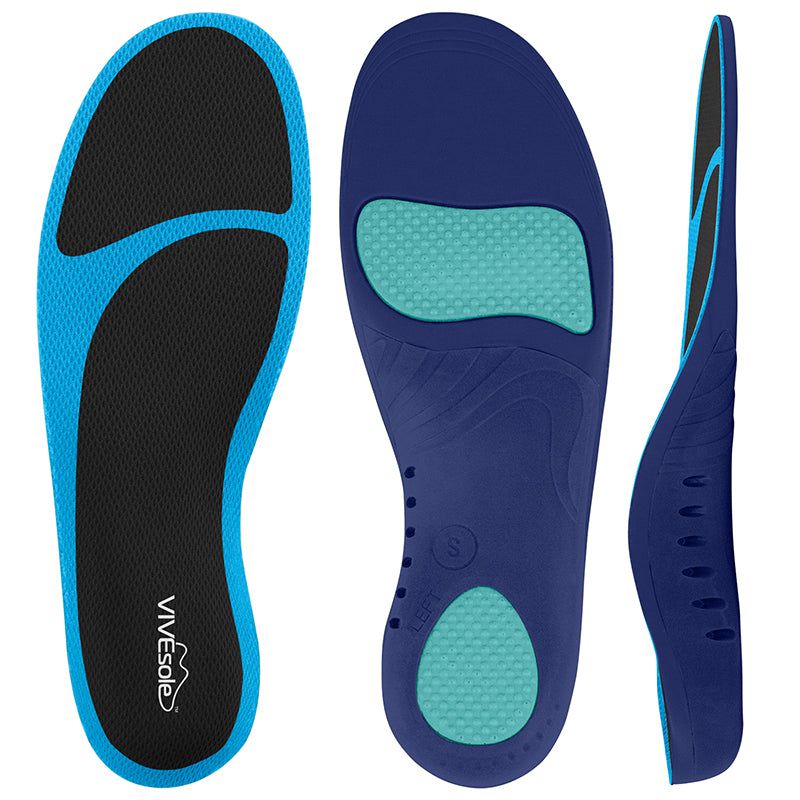
Back pain can often be linked to foot problems because poor foot alignment and inadequate support. Our Heavy Duty Gel Insoles provide excellent shock absorption to reduce the impact on the spine when walking or standing all day. The gel and foam cushioning distribute pressure evenly lessening the strain on feet, ankles, and knees, which contribute to stress on the lower back.
View these insoles
The ideal insoles for running are ones that can offer maximum support while standing up to the regular stress and strain of your feet. Our full-length plantar plus insole is perfect for this, as it can keep your soles padded without flattening for months. The material it uses is lightweight, meaning it won’t slow down your stride, and stays contoured to your arch and heel to prevent rolled ankles and other injuries.
View these insoles
Finding the best insole for working or standing all day in boots is about prioritizing full foot coverage that can protect against all the most common types of foot pain. Envelop’s full-length gel insoles offer a lightweight design that can be trimmed to different boot sizes and relieve pressure on the ball of the foot, arch, and heel simultaneously. They’re also washable, so you can keep them fresh day in and day out.
View these insoles
Bulkier insoles are not ideal for flats and other lightweight footwear, so look for an orthotic that can fit in your shoe while still leaving plenty of room. Vivesole’s ¾ length insoles are a podiatrist-designed option will be able to pair a slim design with adequate support that covers the heel, forefoot, and arch. A quality insole will also be able to treat a range of conditions, from plantar fasciitis, to flat feel or chronic heel pain.
View these insoles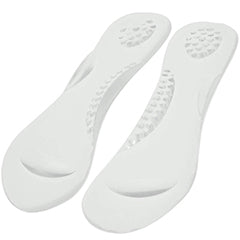
If the pain of high heels is too much, an insole designed specifically for high heels is the answer. That’s why we chose Envelop’s high heel insoles, which offer targeted support to the forefoot, relieving the area where most of your weight is placed. It also features non-slip silicone gel, which will ensure that it stays in place, even after long days, while a reusable adhesive backing means you can still swap them out when needed.
View these insolesA: The best insoles for standing on concrete or hard surfaces tend to provide a good balance of both cushion and arch support. We recommend the Plantar Plus Full Length Orthotics, especially if you have problems with flat feet or weak arches.
A: The most comfortable insoles are typically constructed of gel. While everyone has different preferences, insoles with less of an arch tend to provide more cushion and comfort rather than arch support. If that's what you're looking for I would recommend the Full Length Gel Insoles by Envelop. If you need more arch support, but are still focused on comfort, go for the Full Length Gel Insoles by Vive.
A: With normal wear and tear, insoles last six to nine months. For those who spend the majority of time on their feet, you will need to replace your insoles more frequently around every three to six months of use.
A: Full length orthotics and insoles can be worn on top of an existing shoe insole, but if shoes becomes too tight and uncomfortable we recommend removing the original shoe insole. 3/4 insoles or other inserts are typically always worn with existing shoe insoles.
A: To clean your insoles, use warm water and mild detergent to wipe clean then lightly rinse, avoid soaking the insoles. To reduce the smell of stinky insoles, try using baking soda, dryer sheets or shoe spray to keep them fresh and kill bacteria.
A: To trim your full length insoles, remove original shoe insole and use as sizing guide. Place the old insole on top of your new one and make line or correct size.
If you have additional questions or comments on our foot support products, make sure to contact our product specialists today. Give them a call by phone from 8:30am and 9pm EST daily at 1-800-487-3808 or email at service@vivehealth.com.
Shop all insoles
Leave a comment